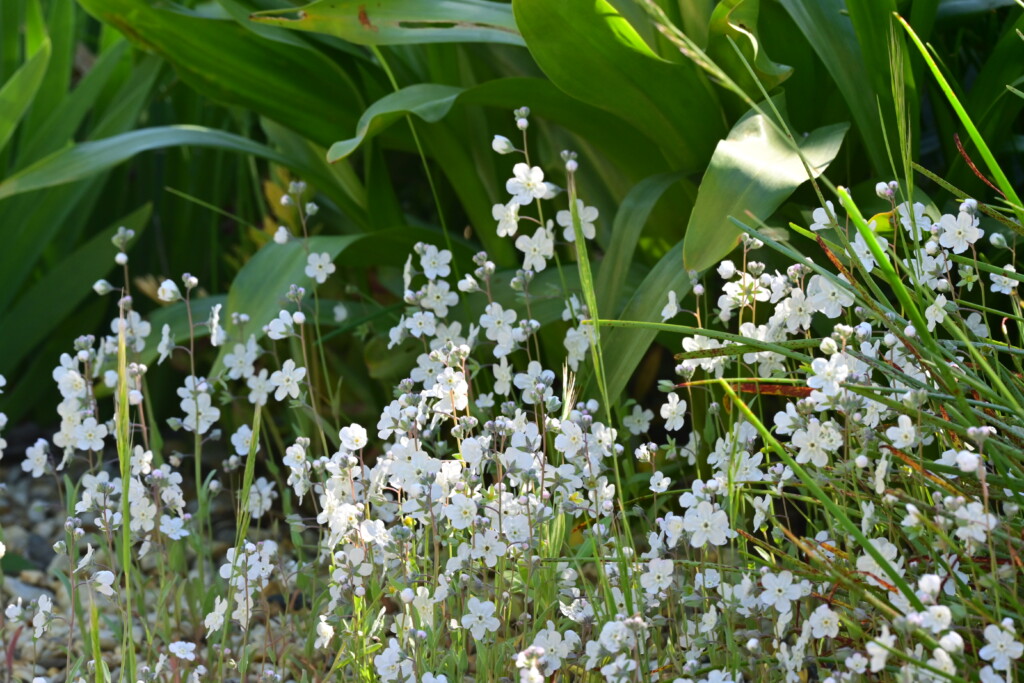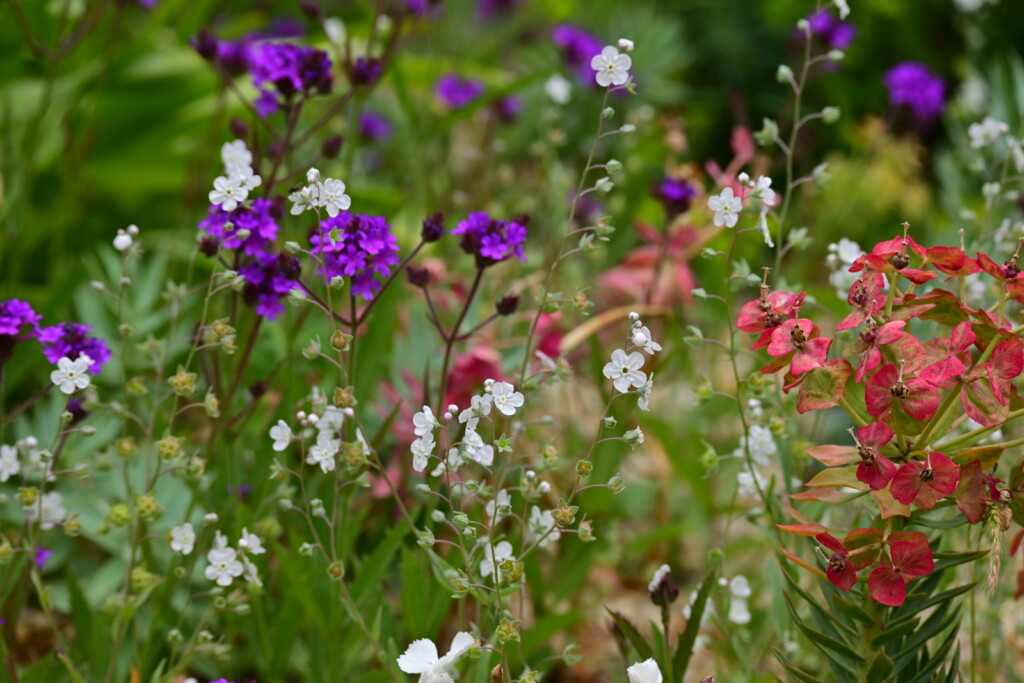Annuals don’t often feature on our Plant of the Week. We too easily consider them horticultural lightweights. But their sense of seizing the day – of making the most of the moment – calls us to do likewise. To get out in the garden and enjoy it NOW. There’s nothing lightweight about that.
So here’s to Omphalodes linifolia. Far better known are its perennial cousins, such as Omphalodes cappadocica, with brilliant sky-blue flowers. But that wouldn’t survive my summers without extra water and protection from the sun. The sparkling-white flowered Omphalodes linifolia doesn’t even try to survive. It doesn’t have to. Being annual, it flowers in spring, while there’s sufficient moisture, then dies, germinating again following autumn, or early-winter, rains.

The foliage is lovely in it’s own way, being of a tapering linear shape (as the species name would suggest) and of a compelling soft, grey-blue, creating low mounds to about 10cm tall. These give rise, in mid spring, to extraordinarily fine upright stems carrying small white, round flowers with the characteristic central eye or ‘navel’ that is said to be the source of the common name for this genus – the navelworts.
At a glance, you’d think you were looking at a very fine form of white forget-me-not, without any of the forget-me-nots’ inherent muscularity. Indeed gutsiness or beefiness is kind of what we expect in annuals – strong, fat stems and big bright flowers. Omphalodes linifolia has neither, pursuing, and achieving, grace and refinement instead.

The fineness of all of its parts means that it doesn’t compete with plants around it. It gratefully accepts any room given it, and just sparkles through and around its companions.
I raised my plants from seed into seedling trays in the first year, and planted them where I wanted them. I haven’t had to do that again, as they keep re-appearing in the same spot year after year. I’ve thrown a bit of excess seed around my steppe, thinking I could do with more, with only very minimal success. So I don’t think there’s much chance of it ever becoming a pest. I recall someone on one of my tours a few years ago saying that it came up everywhere in her garden, but she wasn’t complaining!

The seed occasionally appears on the lists like those of Seedscape or Diggers. Keep your eyes open.
A great plant, I love the little navels. And I agree with your thoughts on annuals, they do sometimes feel as though they’ve been forgotten about or overlooked at least. I think it has a lot to do with ‘annuals’ evoking the thousands of punnets of the monstrous and loud-coloured petunias and violas that appear in nurseries throughout the year. They’re really only good for the ‘potted colour’ label that gets slapped on them. Personally I think they’re mutant and awful and wouldn’t be caught dead growing them! But plants like omphalodes and many others are another beast entirely, with great and very useful qualities, but seem to be passed over too often. When you’re going for a relaxed or naturalistic effect, the way they pop up here and there of their own accord never fails to enhance the outcome.
Just beautiful Michael. I agree with you about annuals .I only use ones that self sow and then I edit. The only down side is that i forget that the seeds are sleeping dig them over and lose them.Where can you find this onphalodes? Just beautiful